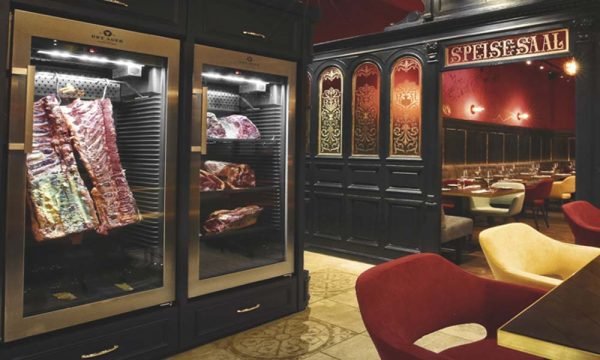Table of Contents
Introduction: Luxury Retirement Villages and Holistic Health
When many people think of retirement villages, they might imagine quiet residential settings, gentle gardens, or social lounges. But the newest generation of luxury retirement villages does far more: it creates green, thoughtfully designed communities where health, wellness, and safety are built into every aspect of daily life. In these settings, residents can live with dignity, purpose, and vitality, without losing the peace of mind that comes from supportive infrastructure.
In such villages, you’ll often find fitness studios, on-site care centers, wellness programs, social and creative activity spaces, and robust safety systems. Rather than seeing aging as decline, these communities invest proactively in promoting good quality of life for older adults. In this post, we explore how retirement villages champion physical, mental, and emotional well-being, while also ensuring safety in the environments where residents live, eat, and socialize.
Prioritizing Physical Health with On-Site Care
One of the major advantages of modern retirement villages is the presence of on-site or near-site medical and allied health services. This could include visiting physicians, nurse practitioners, physiotherapists, occupational therapists, and rehabilitation services. Having essential care available within the community reduces barriers to access and encourages preventive care, not just reactive care.
Frequent checkups, ongoing monitoring of chronic conditions (such as hypertension, diabetes, or arthritis), and rehabilitation services can all be delivered directly to residents. These services help to catch health issues earlier, adjust medications, and maintain mobility. Some villages also partner with telehealth providers, enabling remote consultations without having to leave the premises.
Moreover, integrated care plans are often personalized. Each resident may receive a baseline health assessment and then periodic reassessments, enabling the care team to track changes and intervene early. In effect, the retirement village becomes a kind of “health hub” rather than simply a residential development.
Research and reports frequently note that retirement communities support better health outcomes simply by making care more convenient and consistent. A proactive approach to care helps preserve independence for longer.
Nutritious Meals Designed for Senior Wellness
Nutrition is a cornerstone of good health, especially as we age. Metabolism changes, absorption rates shift, and specific nutrients become more critical. Luxury retirement villages often employ professional dietitians and culinary teams who specialize in senior-friendly menus.
These meals tend to emphasize:
- High-quality protein (important for muscle maintenance)
- Foods rich in calcium, vitamin D, and other bone-supporting nutrients
- Plenty of fresh vegetables and fruits for fiber, antioxidants, and vitamins
- Lower sodium, processed sugar, and saturated fat
- Flexibility to accommodate special diets (e.g. diabetic, low-cholesterol, soft/pureed, texture-modified)
Beyond just the menu, mealtime is designed to be a social, enjoyable experience. Residents dine in elegant communal dining rooms, where the ambiance, social interaction, and food presentation all contribute to a sense of well-being.
Some villages run nutrition workshops, cooking demonstrations, or “healthy eating” education sessions. (By the way, if you’re interested in therapeutic modalities to support holistic health, here’s a resource: Body Balance Blueprint – Integrating Therapeutic Modalities for Health.
In addition, many villages encourage residents to take ownership of their health by offering an introduction to healthy-eating practices in later life, see “Essential and Easy Steps to Improve Your Health as a Senior.” That resource can complement the in-house nutrition programming.
Mental Health and Emotional Support
Health is more than muscles and bones. Emotional and cognitive well-being matter deeply, especially in later life when changes in identity, social roles, physical capability, or loss (of friends, partners, or independence) can trigger anxiety, depression, or loneliness.
Retirement villages increasingly integrate mental health supports:
- On-site counseling or therapy services (psychologists, social workers)
- Support groups (grief, chronic illness, transitions)
- Mindfulness, meditation, and stress-relief classes
- Memory-enhancement programs (brain fitness games, puzzles, workshops)
- Lifelong learning, creative arts, music, and other stimulating programs
- Social events, peer connections, and volunteer opportunities
These are not just “nice add-ons”- they are essential. Studies show that strong social ties and purposeful engagement correlate with better cognitive outcomes, reduced depression, and even increased longevity.
Holistic wellness models used by some retirement communities also emphasize the link between mental, emotional, and physical health. As such, a well-run retirement village will monitor well-being, conduct regular check-ins, and offer flexible mental health support as needed.
Safe, Senior-Friendly Living Spaces
One of the major risks for older adults is environmental hazards, slips, trips, falls, poorly designed layouts, or features that were fine for younger bodies but become dangerous with decreased strength or balance. Thoughtful retirement villages address this with senior-friendly architectural design and continuous safety auditing.
Key design and safety features often include:
- Wide doorways and hallways, minimal thresholds
- Non-slip flooring materials
- Grab bars and handrails in bathrooms, hallways, and near steps
- Zero-step or low-step entrances
- Adequate lighting (especially at night)
- Motion-sensor lighting in corridors and communal spaces
- Emergency call cords/buttons in bathrooms and bedrooms
- Clear, unobstructed walking paths (inside and outdoors)
- Regular maintenance to remove tripping hazards or obstacles
- Fire safety systems: detectors, sprinklers, evacuation plans
- Controlled access, secure doors, and staff-monitored entry points
Indeed, safety guidelines for independent senior living communities list fall prevention measures, effective lighting, and continuous staff safety training as essential.
In higher-acuity zones or memory-care neighborhoods, additional safeguards, such as monitored exits, restricted-access zones, or sensor systems, may be in place to prevent wandering.
Furthermore, many retirement villages conduct regular safety audits, resident safety education, and simulate emergency drills so residents and staff are prepared.
The goal is to create a setting where residents feel confident to move around, socialize, and engage, while minimizing avoidable risk.
Emergency Response and Security Measures
Even with preventive measures, emergencies can happen, medical events, falls, fire, or security incidents. Retirement villages invest heavily in robust response and security infrastructure to minimize harm and provide peace of mind.
Common features include:
- 24/7 monitoring systems, emergency call buttons or wearable pendants
- Staff trained in first aid, CPR, and emergency protocols
- On-site or quickly reachable medical staff
- Surveillance cameras and controlled access points
- Key-card or code-based entry systems for resident safety
- Visitor check-in procedures
- Automated health monitoring systems (wearables, smart sensors)
- Telehealth integration for remote support
- Clear evacuation routes, fire drills, backup power systems
- Geo-fencing, door alarms, or alerting systems in memory care units to prevent wandering
- Protocols for natural disasters or power outages
These systems ensure that in the event of emergencies, help arrives quickly. In many communities, staff respond immediately when a resident triggers an alert, and the infrastructure supports triage, evacuation, or transfer to hospital if needed.
Importantly, security is not only reactive. Surveillance, controlled access, and visitor screening help deter unauthorized entry or accidental hazards.
By combining preventive, design, and emergency-response strategies, retirement villages offer a safer environment than many standalone homes, especially as health needs change.
Conclusion
Luxury retirement villages today are much more than clusters of homes for older adults. They are thoughtfully designed ecosystems built around promoting health, well-being, and safety. From on-site medical and allied health services, to chef-crafted nutrition, to mental health support, to safe living environments and emergency systems, each layer is intentionally structured to empower residents to live with dignity, independence, and engagement.
In such communities, aging does not mean decline, but evolution, an opportunity to thrive with support. For families and seniors alike, the peace of mind that comes with knowing health, wellness, and safety measures are integrated day-to-day is often one of the greatest assets.
Frequently Asked Questions
Q: Are there mental and emotional health supports?
Yes – many retirement villages provide in-house counseling, social work, support groups, and wellness programming focused on emotional and mental health. Mindfulness, memory-enhancement, creative arts, and lifelong learning are commonly offered. These supports recognize that emotional well-being is intimately connected to physical health.
Q: What kind of medical care is available in retirement villages?
Medical care in retirement villages can range widely depending on the community. Typical offerings include on-site or visiting physicians and nurse practitioners, physiotherapy, occupational therapy, rehabilitation services, telehealth consultations, and chronic-disease care. Many villages establish personalized care plans and integrate preventive monitoring, enabling earlier detection and intervention.
Q: How do these communities ensure resident safety?
Safety is addressed at multiple levels:
- Design & environment: senior-friendly layouts, non-slip surfaces, grab bars, good lighting, clear pathways
- Technology & monitoring: emergency call systems, wearables, surveillance, sensor systems
- Security & access: controlled entry points, visitor screening, secured zones
- Staff & protocols: trained emergency response, regular drills, first aid capacity
- Audits & reviews: ongoing safety checks, resident education, maintenance
All these layers work together to reduce risk and respond quickly when needed.





